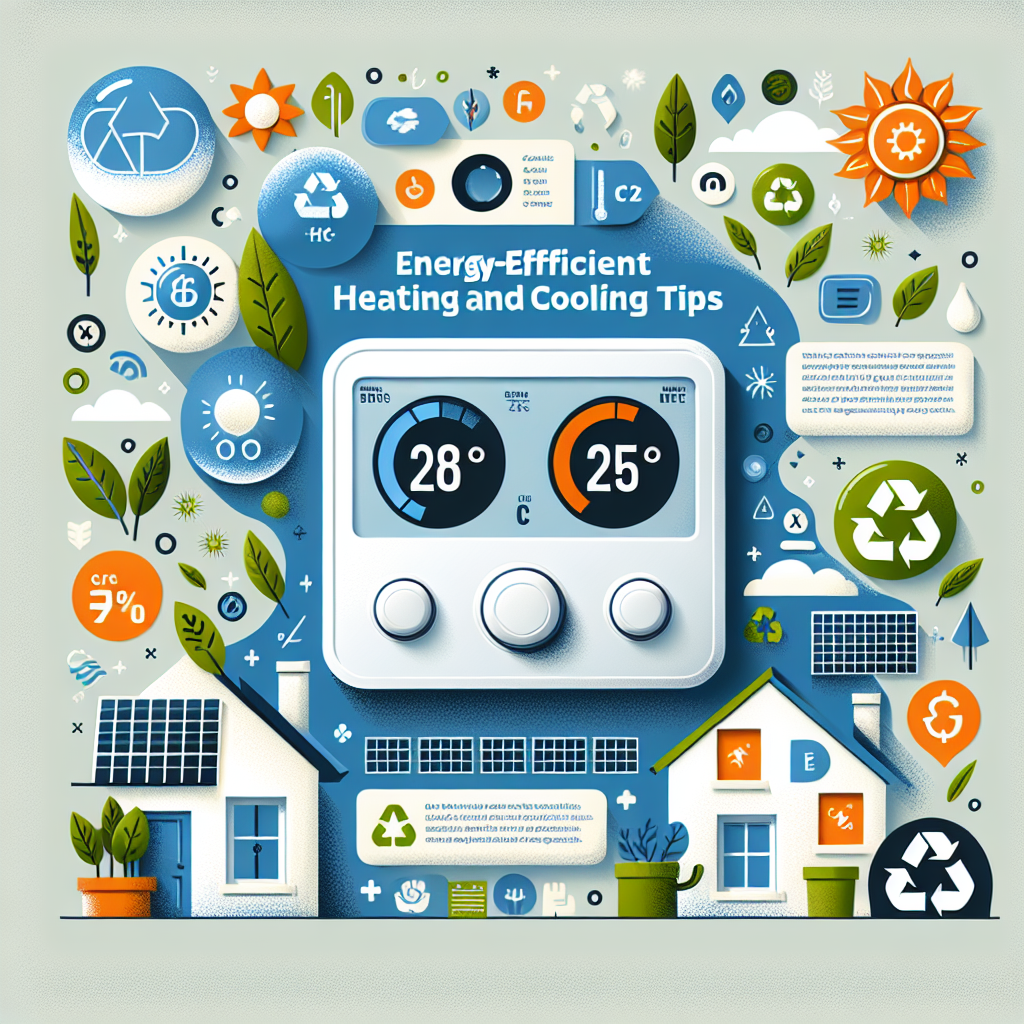In today’s world, maintaining a comfortable indoor environment doesn’t have to be at odds with sustainability. By adopting energy-efficient heating and cooling strategies, you can keep your home cozy or cool while saving money and reducing your carbon footprint. Whether you’re a homeowner or a renter, these practical tips will help you enjoy climate-controlled comfort without the hefty energy bills. Let’s dive into the world of energy efficiency!
Understanding the Importance of Energy Efficiency
Energy-efficient heating and cooling not only lowers your utility bills but also minimizes your impact on the environment. According to the U.S. Department of Energy, about half of the energy used in homes goes toward heating and cooling. By optimizing this energy consumption, you contribute to a healthier planet and enjoy financial savings.
1. Regular Maintenance is Key
Schedule Routine HVAC Inspections
One of the best ways to ensure your heating and cooling systems run efficiently is through regular maintenance. Schedule professional inspections at least once a year. Technicians can clean ducts, check for leaks, and replace worn-out parts, which helps the system operate smoothly and effectively.
Change Filters Frequently
Change or clean your HVAC filters every one to three months, depending on your system and usage. Clogged filters can restrict airflow, forcing your system to work harder and use more energy. A simple filter change can enhance air quality and improve efficiency.
2. Optimize Your Thermostat Settings
Invest in a Smart Thermostat
Smart thermostats allow you to control your home’s temperature remotely and learn your schedule to optimize heating and cooling. By adjusting your thermostat settings when you’re away or asleep, you can save significantly on energy costs. Many models can even provide reports on your energy usage, helping you make more informed decisions.
Set Preferences Wisely
During winter, keep your thermostat set to 68°F while awake and lower it when you’re asleep or away. In summer, aim for 78°F when at home and higher when out. Each degree you adjust can lead to a 1% savings on your energy bill!
3. Seal and Insulate Your Home
Conduct an Energy Audit
Before making any changes, consider conducting a home energy audit to identify where you lose energy. You can do this yourself or hire a professional to find drafts, leaks, and insulation deficiencies.
Insulate Properly
Insulation is your first line of defense against temperature changes. Ensure that your attic, walls, and floors are adequately insulated to prevent heat loss in winter and keep the cool air in during summer. Proper insulation can reduce your heating and cooling needs significantly.
4. Take Advantage of Natural Resources
Utilize Passive Heating and Cooling
Leverage the sun’s energy by allowing natural light and heat into your home during the winter. Open curtains on sunny days and close them at night to retain warmth. Conversely, in summer, keep curtains or blinds closed during the day to block heat from the sun.
Create Cross-Ventilation
In milder weather, open windows on opposite sides of your home to create a natural breeze. This cross-ventilation can significantly reduce the need for air conditioning.
5. Use Energy-Efficient Appliances
Choose the Right HVAC System
If you’re considering a new heating or cooling system, look for units with the Energy Star label. These models are designed to be more energy-efficient compared to standard models. Additionally, consider the size of the unit; improperly sized systems can lead to inefficiency.
Upgrade to Energy-Efficient Fans
Using ceiling fans can lower your cooling costs by allowing you to set your thermostat a few degrees higher while still feeling comfortable. Make sure to run fans counter-clockwise in summer and clockwise in winter for optimal airflow.
6. Be Mindful of Your Habits
Dress Appropriately for the Seasons
Sometimes all it takes to save energy is a simple wardrobe adjustment. Dress warmly in winter and opt for lighter clothing in summer. This helps you feel comfortable without relying too heavily on heating or cooling systems.
Limit Indoor Heat Sources
When using your oven or other heat-producing appliances, consider doing this during the cooler parts of the day. Even small changes, like using a microwave, slow cooker, or outdoor grill, can make a difference in your home’s overall temperature.
Conclusion: Take Charge of Your Energy Use
Embracing energy-efficient heating and cooling tips not only benefits your wallet but also contributes to a healthier planet. By being proactive about maintenance, making well-informed choices, and adopting simple habits, you can create a comfortable living space that is environmentally responsible. Start implementing these strategies today, and watch your energy bills—and carbon footprint—shrink. You can be comfortable at home while also being a responsible global citizen.


